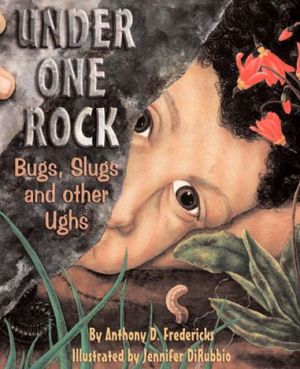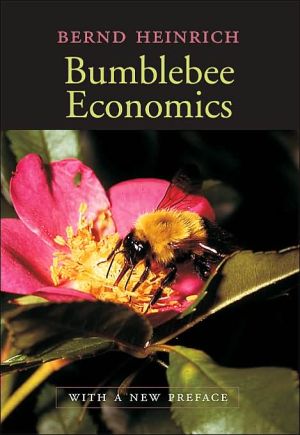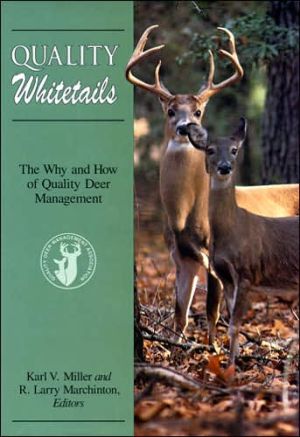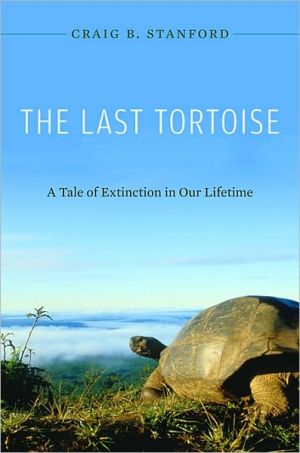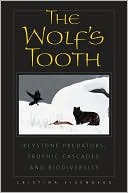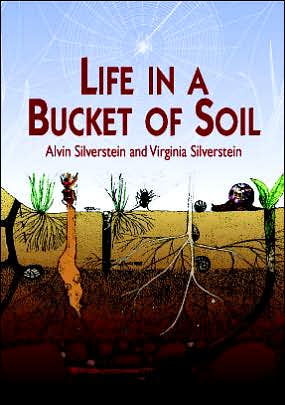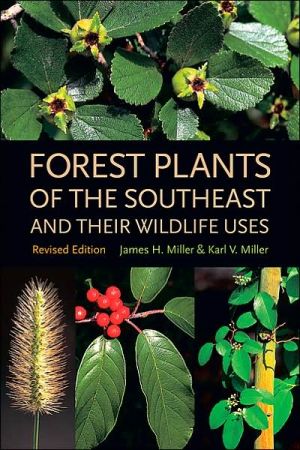Physiological Ecology: How Animals Process Energy, Nutrients, and Toxins
Unlocking the puzzle of how animals behave and how they interact with their environments is impossible without understanding the physiological processes that determine their use of food resources. But long overdue is a user-friendly introduction to the subject that systematically bridges the gap between physiology and ecology. Ecologists—for whom such knowledge can help clarify the consequences of global climate change, the biodiversity crisis, and pollution—often find themselves wading...
Search in google:
"This book fills a major gap in the ecological and physiological literature in the most delightful way. An exciting journey into the wondrous mechanical world behind the great diversity of animals on earth, it is an exhaustive overview of everything to do with resource processing and use in animals. From page to page it demonstrates the seamless connection between ecology and physiology. The writing was a joy to read; the authors are in command of the subject and write lucidly about it."—Theunis Piersma, University of Groningen and Royal Netherlands Institute for Sea Research"Physiological Ecology addresses an important and intriguing topic that has not been adequately summarized previously; there is no corresponding book that discusses resource use at the level presented here. The authors do a masterful and authoritative job of covering both the basics and the details. The numerous and diverse examples and case studies are great, for they illustrate both the concepts and the authors' obvious pleasure in the underlying natural history—part of the fun of this sort of biology."—Joel Kingsolver, University of North Carolina, Chapel Hill P.E. Hertz - Choice This extraordinary book by Karasov and Martinez del Rio integrates a wealth of research about how animals select, consume, and process food. The authors treat topics ranging from energy budgets, food chemistry, the structure and function of digestive systems, postabsorptive nutrient processing, and chemical ecology to feeding behavior, growth, production, and reproduction....Accessibly written, with clear, informative graphs and line drawings.
Preface xi Acknowledgments xvSECTION I: OVERVIEWCHAPTER ONE: Basic Concepts: Budgets, Allometry, Temperature, and The Imprint of History 3 1.1 The Input/Output Budget: A Key Conceptual Framework 4 1.2 The Importance of Size: Scaling of Physiological and Ecological Traits 10 1.3 The Importance of Temperature 30 1.4 Using Historical Data in Comparative Studies 35SECTION II: CHEMICAL ECOLOGY OF FOODCHAPTER TWO: The Chemistry and Biology of Food 49 2.1 Getting Started; First Catch (Store and Prepare) the Hare 49 2.2 Proximate Nutrient Analysis 54 2.3 Dietary Fiber 58 2.4 Carbohydrates 63 2.5 Amino Acids and Proteins 69 2.6 Lipids 75 2.7 Vitamins 93 2.8 Minerals 97 2.9 Secondary Metabolites 103 2.10 Words of Encouragement 108SECTION III: DIGESTIVE ECOLOGYCHAPTER THREE: Food Intake and Utilization Efficiency 117 3.1 Overview of Section III: Why Study Digestion? 117 3.2 Digestive Efficiency Is Inversely Related to "Fiber" Content 118 3.3 Both Digestion Rate and Digestive Efficiency Are Key Nutritional Variables 131 3.4 Daily Food Intake: Energy Maximization or Regulation? 139CHAPTER FOUR: Simple Guts: The Ecological Biochemistry and Physiology of Catalytic Digestion 155 4.1 Lots of Guts, But Only a Few Basic Types 155 4.2 The Gut as a Bottleneck to Energy Flow 184 4.3 The Gut in Energy Intake Maximizers 194 4.4 Intermittent Feeders 199 4.5 The Gut in Diet Switchers 205 4.6 The Evolutionary Match between Digestion, Diets, and Animal Energetics 213 4.7 Summary: The Interplay between Digestive Physiology and Ecology 223CHAPTER FIVE: Photosynthetic Animals and Gas-Powered Mussels: The Physiological Ecology of Nutritional Symbioses 238 5.1 A Symbiotic World 239 5.2 A Diversity of Nutritional Symbioses 243 5.3 Hot Vents and Cold Seeps: Chemolithotrophs of the Deep Sea 265 5.4 The Importance of Nitrogen in Nutritional Symbioses 284CHAPTER SIX: Digestive Symbioses: How Insect and Vertebrate Herbivores Cope with Low Quality Plant Foods 303 6.1. Fermentation of Cell Wall Materials 304 6.2. Microbial Fermentation in Insect Guts 310 6.3. Terrestrial Vertebrates 336 6.4. Herbivory and Detritivory in Fish 376SECTION IV: THE ECOLOGY OF POSTABSORPTIVE NUTRIENT PROCESSINGCHAPTER SEVEN: Postabsorptive Processing of Nutrients 397 7.1 Overview: The Postabsorptive Fate of Absorbed Materials 398 7.2 Controls over Postabsorptive Processing 407 7.3 Costs of Digestive and Postabsorptive Processing 412 7.4 Feast and Famine: The Biochemistry of Natural Fasting and Starvation 417 7.5 Biochemical Indices of Nutritional Status and Habitat Quality 421CHAPTER EIGHT: Isotopic Ecology 433 8.1 Basic Principles 434 8.2 Mixing Models 440 8.3 Isotopic Signatures 444 8.4 The Dynamics of Isotopic Incorporation 455 8.5 Stable Isotopes and Migration 459 8.6 Nitrogen Isotopes 466 8.7 Concluding Remarks and (Yet Again) a Call for Laboratory Experiments 472CHAPTER NINE: How Animals Deal with Poisons and Pollutants 479 9.1 Overview: The Postabsorptive Fate of Absorbed Xenobiotics 480 9.2 Distribution of Xenobiotics in the Body 481 9.3 Biotransformation of Absorbed Xenobiotics 483 9.4 Elimination of Xenobiotics and Their Metabolites 494 9.5 Costs of Xenobiotic Biotransformation and Elimination 498 9.6 Modeling Approaches Can Integrate the Processes of Absorption, Distribution, and Elimination (Including Biotransformation and Excretion) 504 9.7 Models Can Predict Bioaccumulation and Biomagnification in Ecosystems 508 9.8 Postingestional Effects of Xenobiotics on Feeding Behavior 509 9.9 Toxic Effects of Xenobiotics in Wild Animals 516 9.10 Toxicogenomics: New Methodologies for the Integrative Study of Exposure, Postabsorptive Processing, and Toxicity in Animals Exposed to Natural and Manmade Toxins 518SECTION V: LIMITING NUTRIENTSCHAPTER TEN: Ecological Stoichiometry 535 10.1 Ecological Stoichiometry: The Power of Elemental Analysis 536 10.2 An Ecological Stoichiometry Primer 542 10.3 Are Energy and Elements Two Independent Currencies? 561CHAPTER ELEVEN: Nitrogen and Mineral Requirements 569 11.1 Nitrogen Requirements and Limitation in Ecology 569 11.2 Mineral Requirements and Limitation in Ecology 581CHAPTER TWELVE: Water Requirement and Water Flux 608 12.1 Water Budgets, Fluxes, and Requirements 608 12.2 Avenues of Water Loss 614 12.3 The Dietary Requirement for Water 624 12.4 Ingestion of Xenobiotics Can Increase the Dietary Requirement for Water 628 12.5 Is Water Ecologically Limiting? 629 12.6 Testing the Evolutionary Match between Environmental Aridity and Water Relations 634SECTION VI: PRODUCTION IN BUDGETS OF MASS AND ENERGYCHAPTER THIRTEEN: Growth in Budgets of Mass and Energy 647 13.1 Overview of Chapters 13 and 14 647 13.2 Two Approaches Are Used to Evaluate Costs of Production 647 13.3 Energetics of Growth 651 13.4 Rates of Growth 666 13.5 Growth in Relation to Life History Transitions 683CHAPTER FOURTEEN: Reproduction in Budgets of Mass and Energy 697 14.1 Allocation to Reproduction: Trade-off with Development and Effects of Body Size 697 14.2 Approaches for Measuring Costs of Reproduction 698 14.3 Material Costs of Reproduction 708 14.4 Nutritional Control of Reproduction 711 14.5 Putting Energy and Material Costs of Reproduction in Perspective 717Index 725
\ Choice\ - P.E. Hertz\ This extraordinary book by Karasov and Martinez del Rio integrates a wealth of research about how animals select, consume, and process food. The authors treat topics ranging from energy budgets, food chemistry, the structure and function of digestive systems, postabsorptive nutrient processing, and chemical ecology to feeding behavior, growth, production, and reproduction....Accessibly written, with clear, informative graphs and line drawings.\ \ \ \ \ Quarterly Review of Biology\ - Raymond Barbehenn\ This is an excellent textbook for undergraduate—and graduate-level courses, and is recommended for researchers who are interested in an up-to-date overview of this field.\ \ \ BioScience\ - James J. Eiser\ A big topic demands a big book, with some big thinkers behind it. When I agreed to review this book, I knew, given the authors, that I would see some big thinking, but the size of their effort took me by surprise. Physiological Ecology (all 744 pages, 2.7 liters, and 1.9 kilograms of it!) is a comprehensive yet surprisingly accessible treatment of a topic that is the linchpin for biologists of many stripes. . . . So if animals and food webs are central to your interests, you should read this book.\ \ \ \ \ Mammalian Biology\ - Peter Langer\ The authors can be very proud of their accomplishments in this book because their text deals with the general problem 'how animals process energy, nutrients, and toxins' in a very detailed, balanced, clearly written, informatively illustrated—in short, in an excellent way! One does not have to be a prophet to state that this book is destined to become a classic; it will become a widespread, often consulted and continually cited source of reference.\ \ \ \ \ ChoiceThis extraordinary book by Karasov and Martinez del Rio integrates a wealth of research about how animals select, consume, and process food. The authors treat topics ranging from energy budgets, food chemistry, the structure and function of digestive systems, postabsorptive nutrient processing, and chemical ecology to feeding behavior, growth, production, and reproduction....Accessibly written, with clear, informative graphs and line drawings.\ — P.E. Hertz\ \ \ \ \ Quarterly Review of BiologyThis is an excellent textbook for undergraduate—and graduate-level courses, and is recommended for researchers who are interested in an up-to-date overview of this field.\ — Raymond Barbehenn\ \ \ \ \ BioScienceA big topic demands a big book, with some big thinkers behind it. When I agreed to review this book, I knew, given the authors, that I would see some big thinking, but the size of their effort took me by surprise. Physiological Ecology (all 744 pages, 2.7 liters, and 1.9 kilograms of it!) is a comprehensive yet surprisingly accessible treatment of a topic that is the linchpin for biologists of many stripes. . . . So if animals and food webs are central to your interests, you should read this book.\ — James J. Eiser\ \ \ \ \ Mammalian BiologyThe authors can be very proud of their accomplishments in this book because their text deals with the general problem 'how animals process energy, nutrients, and toxins' in a very detailed, balanced, clearly written, informatively illustrated—in short, in an excellent way! One does not have to be a prophet to state that this book is destined to become a classic; it will become a widespread, often consulted and continually cited source of reference.\ — Peter Langer\ \

